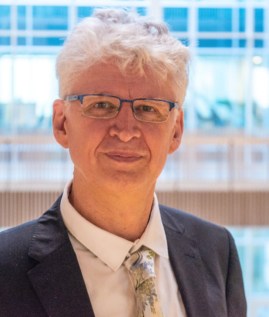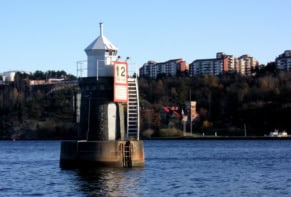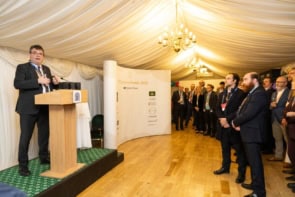Helmut Schober, director-general of the €3bn European Spallation Source in Lund, Sweden, talks to Joe McEntee about building one of the world’s most powerful neutron facilities

What is the European Spallation Source (ESS)?
At the heart of the ESS is a linear accelerator – the most powerful proton linac ever built – that will produce, in its final stage, a 5 MW beam of 2 GeV protons. These protons will strike a 2.5 m diameter rotating target wheel – containing three tonnes of tungsten – to generate a beam of neutrons via a process known as nuclear spallation, with the resulting neutrons sent on to a suite of scientific instruments. The ESS, which is expected to turn on in 2027, is a €3bn pan-European project with 13 European nations as members: Czech Republic, Denmark, Estonia, France, Germany, Hungary, Italy, Norway, Poland, Spain, Sweden, Switzerland and the UK.

What kind of science will be performed at the ESS?
Initially there will be 15 neutron-science instruments – eight of them available by the end of 2027, with the others following in 2028. These instruments will investigate materials properties on the atomic scale across a broad spectrum of scientific discovery – from clean energy and environmental technology to pharma and healthcare; from structural biology and nanotech to food science and cultural heritage.
You’ve been director-general of the ESS since November 2021. What does your typical working day look like?
One thing I’ve learned is that no two days are the same, so I’m unlikely to get bored anytime soon. I spend most of my time meeting with ESS senior managers and project leaders, ranging across all manner of “issues arising” – whether that’s the quality of welds in our cooling systems or the specifics of the facility’s electrical system design and integration. Of course, we also focus on more eye-catching deliverables like the commissioning and installation of the three-tonne tungsten target wheel within its shielded bunker, which we hope to complete in the first half of this year. Our biggest challenge is to ensure that everything remains on schedule – and on budget.
Why did the ESS undertake a “rebaselining” exercise during the COVID-19 pandemic?
The rebaselining was made necessary by supply-chain disruptions as a result of the COVID-19 pandemic, but equally some technical challenges. Our revised plan will see ESS enter user operation in late 2027, two years later than originally planned. Subject to national ratification, the ESS Council also confirmed its contribution to an anticipated additional project cost of up to €550m, of which €190m is contingency.
How do you ensure that the rebaselined ESS project stays on track?
We can never fully exclude unanticipated technical issues. Last summer, for example, we had problems with the helium cooling circuits of our target wheel and the target inner shielding. However, we must continuously monitor and then quickly react whenever issues arise. Alongside the ESS project and technical directorate, the newly established operations and infrastructure directorate helps to optimize the construction, installation, integration and maintenance of the facility. Equally, we have learned that we must further prioritize the quality of our core components and subsystems, with ESS teams managing sign-off and acceptance alongside our in-kind partners and industry vendors.
What role do other large-scale research facilities play in building the ESS?
We could not have built the ESS without an extensive network of collaborations and in-kind contributions of equipment and personnel from over 40 European partner laboratories. Collaboration is key to delivering the project’s core building blocks – among them the linac, the tungsten target wheel and the scientific instruments. As such, the ESS also has a dedicated in-kind director to manage all of these partnerships. Continuous upgrades keep Institut Laue–Langevin at the heart of Europe’s neutron community
How are you working with the neutron science user community?
I liken my role to running a business so it’s never too soon to start talking to the “customers”. One of the main priorities for our science directorate is to engage with researchers to ensure their needs are met. A case in point is our biannual user meeting – held last October in collaboration with the Institut Laue-Langevin (ILL), the reactor-based neutron facility in Grenoble, France – where we highlighted all sorts of cutting-edge materials research that will open up once the ESS turns on. When the ESS is fully operational in 2028, early experiments will be crucial in figuring out how best to deploy the facility’s unique capabilities. Based on my three decades at the ILL, including five years as director, the best outcomes arise when the facility’s instrument scientists work with users to accelerate new lines of enquiry.
When do you start planning the transition from construction to operation?
Over the next five years, my task is to manage an efficient transition to scientific operation. That effort is now taking shape and will be crucial to successfully building a post-launch ESS workforce.
What about the long-term roadmap for European neutron science?
The future is all about greater collaboration and co-ordination among Europe’s neutron research labs. Last year, I presented the idea of an umbrella initiative for Europe’s neutron science facilities – provisionally labelled the European Neutron Science Laboratory – to drive neutron science forward. It would, among other things, implement a joint technology roadmap for Europe’s neutron research labs and help us engage in a more unified way with the scientific user community.



